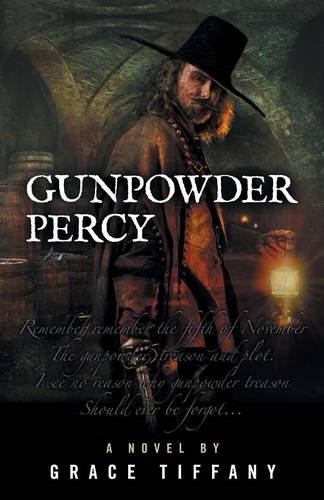Gunpowder Percy
The novel follows Thomas Percy, a member of the group of English Catholics that planned the infamous Gunpowder Plot in 1605. Through him and his circle, the reader is introduced to the religious and political atmosphere of the period as well as the events surrounding and leading up to the Fifth of November.
Tiffany evokes vivid and rich detail of the early 17th century—streets, smells, and clothing. Even if readers are familiar with the events depicted in the novel, they will turn the pages in order to immerse themselves in this tumultuous world. Additionally, Tiffany’s expertise as a Shakespearean is apparent, as Shakespeare is a mechanism for the plot: Thomas Percy visits the Globe theatre repeatedly to watch Shakespeare’s history play, Henry IV, Part 1 and is obsessed with and encouraged by the character of Hotspur, the hot-headed Northern noble who tries to overthrow the king in 1403. Moreover, lines and phrases from Shakespeare’s works are seamlessly and delightfully woven through the text.
Tiffany’s knowledge and attention to period detail are compelling, but what is equally gripping is the manner in which the characters are written. Tiffany refuses to give her readers a hero, as she avoids winnowing history down to heroes and villains—preferring to show only the winners and losers. In fact, many of the characters in the book refuse to gain the reader’s sympathy either because of their rigid religious fervor or their political scheming.
Towards the end of the novel, Tiffany insightfully connects the events of the Gunpowder Plot to the Civil War—noting that the successful plot to destroy the monarchy was led by the Puritans, a very passionate religious minority. In this subtle way, Tiffany’s novel provides readers with some cogent thoughts on the complex role of religious terrorism throughout history.










